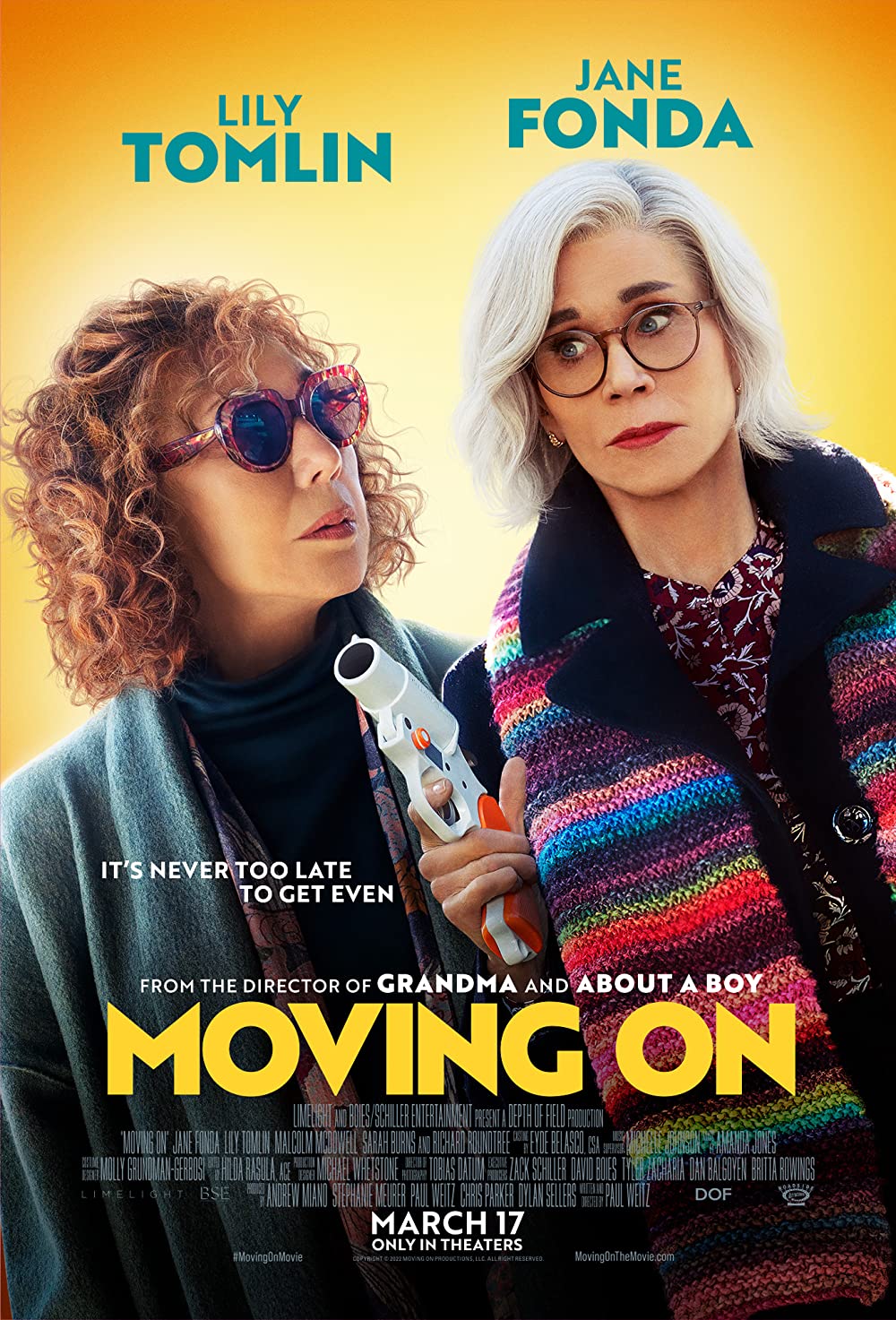Moving On
At the end of my 80 for Brady view, I wrote that I wanted to see its stars in “a project worthy of their abilities.” Moving On accomplishes that for two of them. Jane Fonda and Lily Tomlin, who of course also appeared in 9 to 5 together back in 1980, reunite for this dark comedy that deals with the quest for vengeance. It may not be the hardest-hitting film ever made on the subject, but it’s smarter and funnier than the duo’s goofy football fantasy. They get to play real people, rather than “crazy old lady” caricatures. Fonda is Claire. She leaves her Ohio home and heads to California for the funeral of an old friend. That’s not her only reason for going. She intends to kill the friend’s widower husband, Howard (Malcolm McDowell). You don’t find out why initially, and I don’t intend to reveal it, except to say that she has a valid reason for hating him. At the service, she runs into Evelyn (Tomlin), another old friend with her own reason for despising Howard. Claire confesses her plan, which Evelyn initially mocks. Eventually she agrees to help. The plan faces a complication when Claire is reunited with her ex-husband Ralph (Richard Roundtree) and things heat up between them. Writing about Moving On is difficult without getting into the specifics. The movie is a comic revenge fantasy, filled with sharp one-liners and a few amusing bits of physical humor. Underneath that, though, is a fairly deep theme related to…well, you see, I can’t go there without spoiling it. You could probably take an educated guess, and you’d most likely be correct. Since the revelation isn’t made until roughly halfway through, spelling it out here would throw off the way writer/director Paul Weitz builds to it. Perhaps the best way to convey what the film is like is to say that, for all Tomlin’s wisecracking and Fonda’s amusingly unsuccessful efforts to kill Howard, the story has a substantive core. This isn’t Throw Momma from the Train or Serial Mom, it’s a picture that takes Claire’s motivation seriously, then plays her attempt to carry out the plan for laughs.That works because the two leads are perfectly balanced. In several key scenes, Fonda provides the sense of emotion that allows us to believe this ordinary woman might really resort to murder. We feel for her and totally understand the rage driving her thirst for revenge. On the opposite end of the spectrum, you’ve got Tomlin nailing Evelyn’s sarcastic comments. Her character points out the absurdity of the predicament. Howard has gotten away with being a louse to so many people, never facing any sort of consequence. Taking matters into their own elderly hands is the only way he’ll ever be held accountable. The section with Ralph is more of a “B story” than an integral part of the plot. Nevertheless, it works because Fonda and Roundtree have nice chemistry together. Moving On also has a “C story” involving Evelyn’s kindness toward a young child who seems confused about their gender identity. More could have been done with that angle, as it feeds into the character’s own arc. Instead, it is present mostly to give the women an avenue to acquire a gun from the kid’s grandfather. With an 85-minute running time, there was room to expand on these subplots more fully. Both offer pleasure, without feeling as though they advance the main story to the fullest extent possible. Moving On does work, thanks to Fonda and Tomlin. They’re ably aided by McDowell, who is very good at making Howard someone you hate. Humor can be a great way of addressing difficult subjects, which is what Weitz seems to be doing. A lot of women will identify with Claire and/or Evelyn. The women get into hilarious shenanigans, but the focus on how they’ve been wronged is never lost. Watching these two screen legends get even is way more fun than watching them go to the Super Bowl.
out of four
Moving On is rated R for language. The running time is 1 hour and 25 minutes.
